The Honor Magic4 Ultimate is the Chinese brand’s flagship device, featuring top-end specs all around, including a Qualcomm Snapdragon 8 Gen 1 5G chipset. The rear camera features a 1/1.12″ 50MP sensor, one of the largest we have seen on a phone and the same size as on last year’s Mi 11 Ultra, in the stabilized primary module. The ultra-wide and tele modules both come with a 1/2.0″ 64MP sensor and offer a focal length range from 11mm to 90mm equivalent. The camera also features a flicker detection sensor that is used to guide the exposure system by capturing ambient light and that helps to prevent banding artifacts. A spectrum-enhanced camera (not activated yet with the tested firmware version) captures additional light information from the near-infrared part of the light spectrum which enhances the clarity and dynamic range of images in outdoor conditions.
The camera also uses fusion algorithms to improve texture at the center of the frame when tele zooming. In addition, tele quality is improved through combining optical image stabilization (OIS) and AI super-resolution algorithms.
In video mode, the camera can record 4K video at 30 frames per second. In a later firmware version (that we have not tested) HDR10+ recording will be available as well as a standalone AI chipset, which could help enhance texture and noise as well the brightness in low light videos recorded at 4K resolution and 30 frames per second.
Let’s see how the Honor Magic4 Ultimate camera performed in the DXOMARK Camera tests.
Key camera specifications:
- Primary: 50 MP 1/1.12″ sensor, 1.4μm pixels, 23mm equivalent focal length, f/1.6-aperture lens, OIS, PDAF, Laser-AF
- Ultra-wide: 64MP 1/2.0″ sensor, 0.7μm pixels, 11mm equivalent focal length, f/2.2-aperture lens, PDAF
- Tele: 64MP 1/2.0″ sensor, 0.7μm pixels, 90mm equivalent focal length, f/3.5-aperture lens, OIS, PDAF
- LED flash
- Flicker sensor
- Spectrum-enhanced sensor
- 4K at 30fps, 1080p up to 60fps (tested at 4K/30fps)
Scoring
Sub-scores and attributes included in the calculations of the global score.
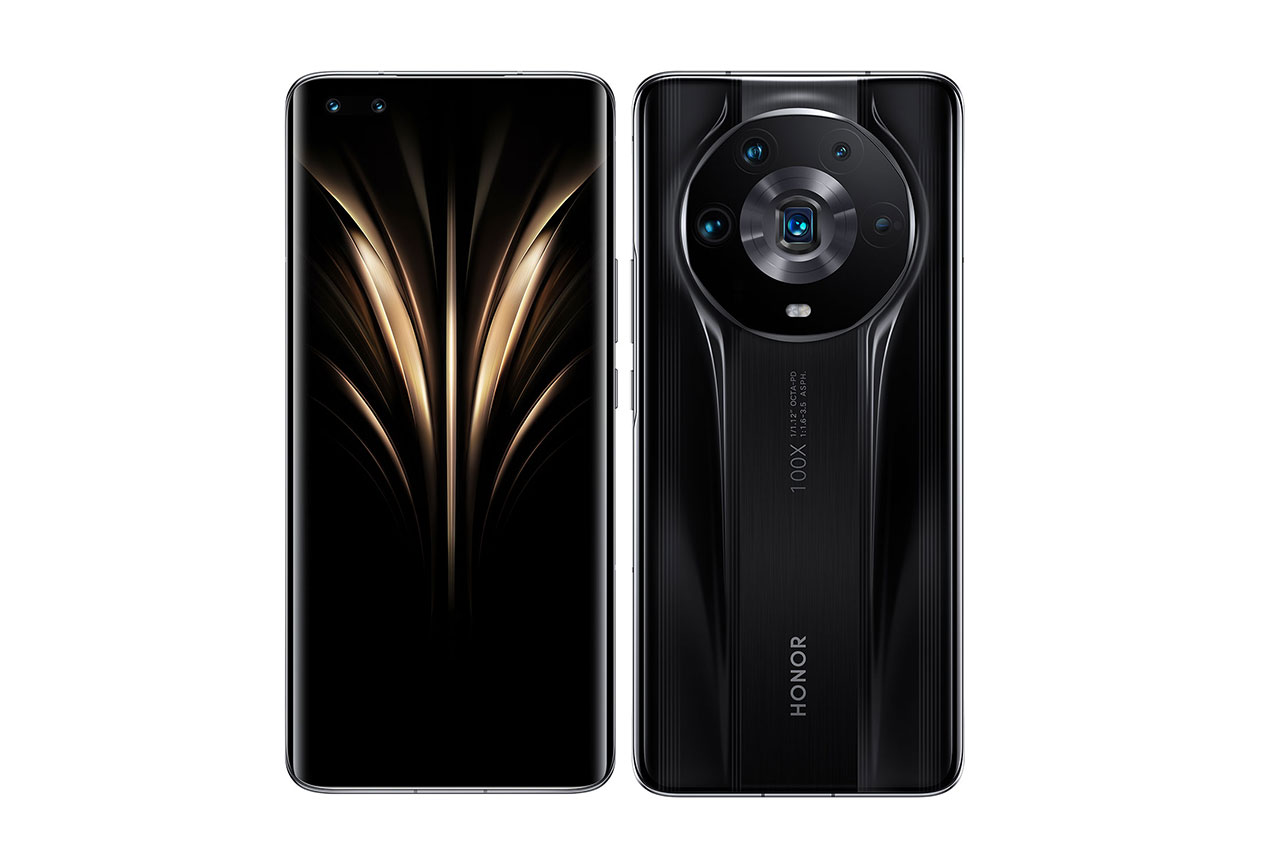
Honor Magic4 Ultimate


Use cases & Conditions
Use case scores indicate the product performance in specific situations. They are not included in the overall score calculations.
Outdoor
Photos & videos shot in bright light conditions (≥1000 lux)
Indoor
Photos & videos shot in good lighting conditions (≥100lux)
Lowlight
Photos & videos shot in low lighting conditions (<100 lux)
Friends & Family
Portrait and group photo & videos
 22nd
22nd 20th
20thPros
- Good exposure and wide dynamic range
- Fast and consistent autofocus
- Low noise in bright light and indoors
- Nice white balance
- Good detail at all tele settings, especially medium range
- Good exposure and low noise on ultra-wide camera
- Accurate exposure and good texture/noise trade-off in night shots
- Good subject isolation in bokeh mode
- Effective video stabilization
- Nice color and white balance in video mode
- Good video exposure, especially indoors and in low light
- Low noise and high detail in video
Cons
- Low contrast in some HDR scenes
- Some local loss of detail in the shadows
- Muted colors in backlit scenes
- Fusion artifacts on tele and ultra-wide cameras
- Slightly limited dynamic range in video, highlight clipping
- Video artifacts, including hue shift and ghosting
- Sharpness differences between video frames in low light
- White balance instabilities in video
Test summary
About DXOMARK Camera tests: DXOMARK’s Camera evaluations take place in laboratories and in real-world situations using a wide variety of subjects. The scores rely on objective tests for which the results are calculated directly by measurement software on our laboratory setups, and on perceptual tests in which a sophisticated set of metrics allow a panel of image experts to compare aspects of image quality that require human judgment. Testing a smartphone involves a team of engineers and technicians for about a week. Photo, Zoom, and Video quality are scored separately and then combined into an Overall score for comparison among the cameras in different devices. For more information about the DXOMARK Camera protocol, click here. More details on smartphone camera scores are available here. The following section gathers key elements of DXOMARK’s exhaustive tests and analyses. Full performance evaluations are available upon request. Please contact us on how to receive a full report.
With a DXOMARK Camera score of 147 the Honor Magic4 Ultimate is No. 1 in our ranking, thanks to outstanding still image performance across multiple use cases, such as portraits, night shots, cityscapes, action images, and zooming. The Honor also does very well in the video category, with good detail capture, and very efficient stabilization. Overall video performance is on par with its main rivals.
When shooting photos, the camera offers a wide dynamic range while maintaining pleasant contrast. Combined with the second-best texture/noise compromise that we have seen to date, this allows for excellent detail capture in both portrait and landscape images. The autofocus with its well-implemented zero shutter lag makes the Honor a good pick for action images as images are captured pretty much instantaneously when the shutter is triggered. In addition, moving subjects are free of motion blur, although some slight fusion artifacts can be visible.
The Honor Magic4 Ultimate is also an excellent tool when it comes to low light and night photography, ranking second in our new low light use case, which aggregates data from the Photo, Video, Zoom, and Bokeh tests. Accurate colors and good exposure make for stunning nightscapes and night portraits are rendered well, even without flash use. Detail capture is great in low light and motion blur is controlled well.
The Honor is also one of the best phones we have tested to date for zooming in or out. With its 11mm equivalent ultra-wide camera, it offers the widest field of view of any camera we have tested to date. Despite the wide lens, distortion and anamorphosis are well under control, making the device a good pick for wide-angle portraits. In addition, the camera captures better detail than the competition at 16mm, which is the default ultra-wide setting. This is achieved by fusing image data from the ultra-wide and primary cameras. On the downside, some fusion artifacts in the shape of a local loss of detail can sometimes become noticeable. But target exposure and color rendering are usually accurate. White balance is pleasant in all conditions.
The Honor Magic4 Ultimate is also outstanding for tele zooming, thanks to the combination of a 64MP 90mm equivalent tele module with a number of image fusion solutions that result in excellent detail and a wide dynamic range at all tele zoom settings. At close range, levels of detail are high and on par with the direct rivals, while capturing a lot of dynamic range. The high levels of detail are likely explained by AI fusion algorithms that improve fine detail in the most important areas of the frame. But this technology comes at a cost because a variation in the level of captured detail is often noticeable across the frame.
Medium range (approximately 3.5x) is where the Honor Magic4 Ultimate really shines. Detail is very high compared to the direct competition. Dynamic range is wide, and color rendering and target exposure are pleasant in all tested conditions, including low light.
The Honor Magic4 Ultimate does not achieve a top score for Video, but it is still an excellent phone for recording moving pictures. Colors are accurate and vivid, especially in bright light and low light, delivering an overall very pleasant look. Fine detail is pretty well preserved, and overall the texture/noise trade-off for video is on par with the competition. Dynamic range is slightly more limited than on the best in class but the camera maintains good exposure, even in difficult backlit video scenes.
Photo
Honor Magic4 Ultimate
169
For scoring and analysis, DXOMARK engineers capture and evaluate more than 2,600 test images both in controlled lab environments and in outdoor, indoor and low-light natural scenes, using the camera’s default settings. The photo protocol is designed to take into account the main use cases and is based on typical shooting scenarios, such as portraits, family, and landscape photography. The evaluation is performed by visually inspecting images against a reference of natural scenes, and by running objective measurements on images of charts captured in the lab under different lighting conditions from 1 to 1,000+ lux and color temperatures from 2,300K to 6,500K.

Exposure
Honor Magic4 Ultimate
130
Exposure is one of the key attributes for technically good pictures. The main attribute evaluated is the brightness of the main subject through various use cases such as landscape, portrait, or still life. Other factors evaluated are the contrast and the dynamic range, eg. the ability to render visible details in both bright and dark areas of the image. Repeatability is also important because it demonstrates the camera's ability to provide the same rendering when shooting several images of the same scene.
The Honor Magic4 Ultimate delivers very high contrast entropy values in all test conditions. Contrast entropy is a measurement of the quantity of information (in terms of levels of gray) contained in a given part of the scene. When shooting handheld, the Honor usually manages to capture more information in areas near saturation than its rivals. Performance is consistent across all conditions, even where the comparison cameras struggle, for example, 100 lux TL84 with a brightness difference of EV7.
Some cameras have a tendency to slightly underexpose in order to protect the highlights in an image. This is not the case for the Honor, which delivers consistent target exposure and high entropy values at the same time. This is true even for difficult high-contrast and low-light conditions.
In backlit scenes, target exposure on faces is usually accurate and a wide dynamic range ensures good detail in the bright sky in the background, with only very slight highlight clipping. The Huawei P50 Pro, on the other hand, often struggles to capture a pleasant face exposure, while the Xiaomi Mi 11 Ultra usually suffers from contrast issues. Ideally for this kind of scene nice skin tones and good contrast are maintained and the Honor strikes a very good compromise in this respect.
In low light, the Honor usually delivers accurate exposure and a dynamic range that is slightly wider than on the competitors. A lot of detail is retained in the shadow and especially highlight areas of the frame. The P50 Pro has a very similar dynamic range, but overall exposure of the scene is too bright. Even though the Mi 11 Ultra has a darker exposure, it shows more highlight clipping.

Color
Honor Magic4 Ultimate
130
Color is one of the key attributes for technically good pictures. The image quality attributes analyzed are skin-tone rendering, white balance, color shading, and repeatability. For color and skin tone rendering, we penalize unnatural colors but we respect a manufacturer's choice of color signature.
In bright light, the Honor’s color rendering is accurate with pleasant saturation. The P50 Pro has some issues with the sky, which is often rendered too blue in cloudy conditions. The Honor tends to render skies very accurately, but cool casts can be slightly noticeable in cloudy weather or in high-contrast scenes. Xiaomi Mi 11 Ultra images often show a slight pink cast. The Huawei P50 Pro is the most neutral in this regard.
When capturing indoor scenes, slight warm color casts can be noticeable, especially in backlit high-contrast scenes. In this sample, there is a very slight orange cast visible, but skin tones are rather accurate. In comparison, skin tones are inaccurate on the Xiaomi Mi 11 Ultra. Note that the Honor delivers a wider dynamic range here than the competitors, which show slightly more clipping in the sky outside the window.

Autofocus
Honor Magic4 Ultimate
125
Autofocus tests concentrate on focus accuracy, focus repeatability, shooting time delay, and depth of field. Shooting delay is the difference between the time the user presses the capture button and the time the image is actually taken. It includes focusing speed and the capability of the device to capture images at the right time, what is called 'zero shutter lag' capability. Even if a shallow depth of field can be pleasant for a single subject portrait or close-up shot, it can also be a problem in some specific conditions such as group portraits; Both situations are tested. Focus accuracy is also evaluated in all the real-life images taken, from infinity to close-up objects and in low light to outdoor conditions.
The Honor Magic4 Ultimate uses Zero Shutter Lag (ZSL) technology, which allows for image capture exactly at the same time the shutter is triggered, without any delay. To achieve this, images are continuously buffered while the camera app is open. The autofocus is very consistent in all conditions. This graph shows autofocus-reaction performance in challenging low light. The closer together the points are, the more stable the autofocus. The farther apart the points are from one another indicates autofocus instability.
In this difficult backlit scene, the photographer triggers the shutter when the model passes through the door frame. On the Honor, the image has been captured at that precise moment, thanks to Zero Shutter Lag doing its job, even in difficult conditions and for a portrait shot where face detection plays an important role. The subject is in focus and no motion blur is visible.
Due to the large image sensor (for a smartphone) size in Honor’s primary camera and the wide aperture, depth of field is, at least on paper, pretty shallow. However, the Magic4 Ultimate uses artificial intelligence (AI) to identify and sharpen partially blurred subjects in the background, similar (but not quite as polished) to what we’ve seen previously on the Mi 11 Ultra. This way, multiple subjects in different focus planes can be rendered sharp.

Texture
Honor Magic4 Ultimate
125
Texture tests analyze the level of details and the texture of subjects in the images taken in the lab as well as in real-life scenarios. For natural shots, particular attention is paid to the level of details in the bright and dark areas of the image. Objective measurements are performed on chart images taken in various lighting conditions from 1 to 1000 lux and different kinds of dynamic range conditions. The charts used are the proprietary DXOMARK chart (DMC) and the Dead Leaves chart.
The Magic4 Ultimate captures high levels of detail in all conditions, especially when shooting handheld in low light.
In low light, the Honor Magic4 Ultimate captures even better fine detail than the comparison phones, which are both among the best phones we have tested.
In bright outdoor light, fine detail is very well preserved. The level of detail is slightly better than the Huawei P50 Pro, and the Honor also applies slightly stronger sharpening. In this landscape scene, the Xiaomi Mi 11 Ultra delivers the best fine detail among the rival cameras.

Noise
Honor Magic4 Ultimate
117
Noise tests analyze various attributes of noise such as intensity, chromaticity, grain, structure on real-life images as well as images of charts taken in the lab. For natural images, particular attention is paid to the noise on faces, landscapes, but also on dark areas and high dynamic range conditions. Noise on moving objects is also evaluated on natural images. Objective measurements are performed on images of charts taken in various conditions from 1 to 1000 lux and different kinds of dynamic range conditions. The chart used is the Dead Leaves chart and the standardized measurement such as Visual Noise derived from ISO 15739.
The Honor camera usually keeps image noise very well under control and overall the Magic4 Ultimate’s performance is close to its flagship rivals and better than the iPhone 13 Pro Max in all conditions.
Noise levels are very low, even in high-contrast conditions. In this low light scene (5 lux), hardly any noise is visible.

Artifacts
Honor Magic4 Ultimate
82
The artifacts evaluation looks at lens shading, chromatic aberrations, geometrical distortion, edges ringing, halos, ghosting, quantization, unexpected color hue shifts, among others type of possible unnatural effects on photos. The more severe and the more frequent the artifact, the higher the point deduction on the score. The main artifacts observed and corresponding point loss are listed below.
Image artifacts are well controlled on the Magic4 Ultimate. Our testers observed some issues, such as fusion artifacts, but out of the thousands of samples we shot for a test, only approximately 10 images were affected.
Fusion artifacts are visible in the reflection of the light bulb on the wall. There is also strong color quantization visible in this sample.
Our testers also observed flare in sunny conditions. In these samples, flare is quite intrusive on the Honor, while the Xiaomi and Huawei both manage it better, albeit with contrast that is too low.
Bokeh
Honor Magic4 Ultimate
85
Bokeh is tested in one dedicated mode, usually portrait or aperture mode, and analyzed by visually inspecting all the images captured in the lab and in natural conditions. The goal is to reproduce portrait photography comparable to one taken with a DLSR and a wide aperture. The main image quality attributes paid attention to are depth estimation, artifacts, blur gradient, and the shape of the bokeh blur spotlights. Portrait image quality attributes (exposure, color, texture) are also taken into account.
We tested aperture mode on the Honor, and in bokeh mode, the device applies blur to the foreground, making for a realistic effect. Depth estimation is not as good as on the P50 Pro but is similar to the Xiaomi, and is overall accurate. Background blur is strong, similar to the Huawei P50 Pro. In comparison, the Xiaomi applies less blur. On the downside, the blur gradient is not very smooth and bokeh images show a lack of fine detail.
Preview
Honor Magic4 Ultimate
93
Preview tests analyze the image quality of the camera app's preview of the image, with particular attention paid to the difference between the capture and the preview, especially regarding dynamic range and the application of the bokeh effect. Also evaluated is the smoothness of the exposure, color and focus adaptation when zooming from the minimal to the maximal zoom factor available. The preview frame rate is measured using the LED Universal Timer.
The Honor’s preview image shows some differences to the final capture. Dynamic range of the preview is much more limited than in capture, with higher levels of highlight clipping. Target exposure is usually quite close between preview and capture, and in bokeh scenes, the blur effect is properly applied to the preview image. Blur intensity is a little lower than in capture.
Zoom
Honor Magic4 Ultimate
169
DXOMARK engineers capture and evaluate over 400 test images in controlled lab environments and in outdoor, indoor, and low-light natural scenes, using the camera’s default settings and pinch zoom at various zoom factors from ultra wide to very long-range zoom. The evaluation is performed by visually inspecting the images against a reference of natural scenes, and by running objective measurements of chart mages captured in the lab under different conditions from 20 to 1000 lux and color temperatures from 2300K to 6500K.

Wide
Honor Magic4 Ultimate
122
These tests analyze the performance of the ultra-wide camera at several focal lengths from 12 mm to 20 mm. All image quality attributes are evaluated, with particular attention paid to such artifacts as chromatic aberrations, lens softness, and distortion. Pictures below are an extract of tested scenes.
The Honor’s ultra-wide focal length of 11mm is the widest in our test database. This allows the camera to capture more elements of the scene than its rivals. For portrait shots, the camera uses image fusion to improve detail on faces. However, the fusion algorithms can also sometimes cause a local loss of texture. Target exposure is good, and color rendering, as well as white balance, are usually accurate. However, on some occasions, blue color casts are slightly visible, like in this sample.
The Honor Magic4 Ultimate uses image fusion on its ultra-wide camera in order to push detail. In this 18mm scene, fine detail is better preserved than on the rival cameras. Noise is well under control, and the Honor offers a much better texture/noise trade-off than the competition. Aliasing is often visible in areas of high-frequency patterns.

Tele
Honor Magic4 Ultimate
128
All image quality attributes are evaluated at focal lengths from approximately 40 mm to 300 mm, with particular attention paid to texture and detail. The score is derived from a number of objective measurements in the lab and perceptual analysis of real-life images.
The graph below shows the light collection capability of several devices across all equivalent focal lengths. Light collection is an estimation of the amount of light that the sensor can capture in a single exposure. It is defined as follows, with S being the effective area of the sensor and Fn the aperture. The higher the value, the higher the number of photons that arrive at the sensor.

We see decreasing curves in the graph because as we frame to a given field of view (or equivalent focal length), the effective sensor areas decrease. The vertical purple dotted line marks the default focal length of the Honor’s ultra-wide camera. The graph shows that, at least on paper, the Honor Magic4 Ultimate is capable of capturing more light than its competitors in a single exposure of the primary sensor. At ultra-wide and long tele settings only the Xiaomi Mi 11 Ultra collects more photons. Please also note that the Honor Magic4 Ultimate offers an up to 100x digital zoom option for those really long tele shots. 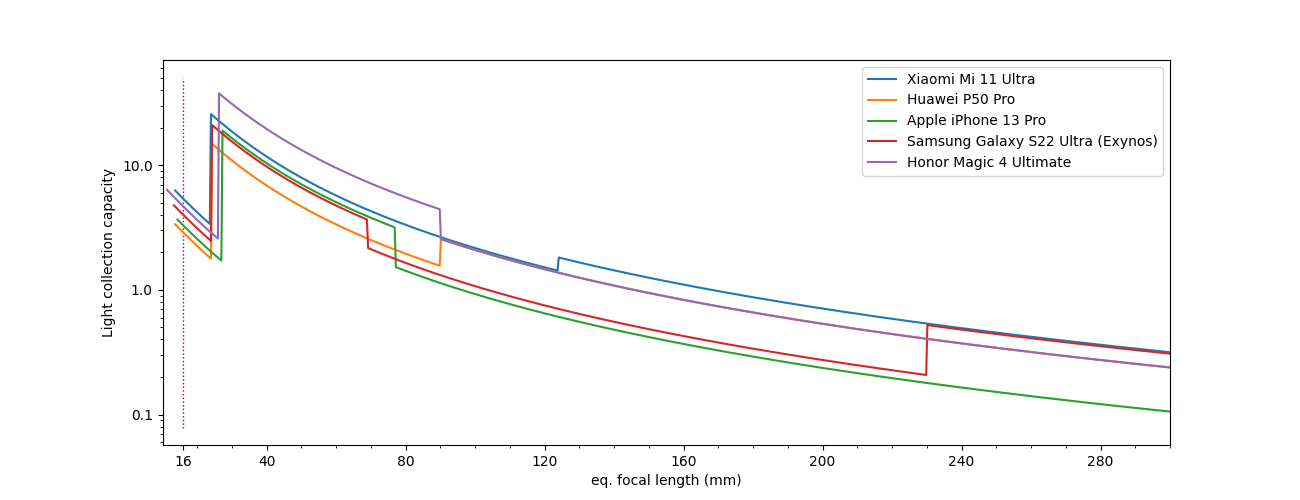
At short range, tele detail is very high at the center of the frame. To achieve this, the camera captures this kind of image using its tele camera and then fills the outer areas of the frame with image data from the primary camera. In these outer areas, a noticeable drop in detail can be observed. For short-range tele shots, the Xiaomi Mi 11 Ultra is, therefore, a better choice.
Thanks to its 90mm tele module in combination with an efficient detail enhancement algorithm, the Honor Magic4 Ultimate manages to render better texture than its rivals at medium range tele. Target exposure is usually good, and dynamic range is as similarly wide as the Huawei P50 Pro. Colors are nice.
On the Magic4 Ultimate, measured texture is very high at all focal lengths and usually higher than on the competition.
Video
Honor Magic4 Ultimate
159
DXOMARK engineers capture and evaluate more than 2.5 hours of video in controlled lab environments and in natural low-light, indoor and outdoor scenes, using the camera’s default settings. The evaluation consists of visually inspecting natural videos taken in various conditions and running objective measurements on videos of charts recorded in the lab under different conditions from 1 to 1000+ lux and color temperatures from 2,300K to 6,500K.
NOTE: The sample video clips in this section are best viewed at 4K resolution.

Exposure
Honor Magic4 Ultimate
116
Exposure tests evaluate the brightness of the main subject and the dynamic range, eg. the ability to render visible details in both bright and dark areas of the image. Stability and temporal adaption of the exposure are also analyzed.
Video target exposure is usually accurate, and the camera offers a dynamic range that is good but not among the very best, with pleasant contrast in backlit scenes. The Huawei P50 Pro shows some more highlight clipping in the bright window, and the Xiaomi Mi 11 Ultra struggles with contrast on the dark-skinned model. Some exposure blinking can be visible, but exposure transitions in changing light conditions are pretty smooth.

Color
Honor Magic4 Ultimate
120
Image-quality color analysis looks at color rendering, skin-tone rendering, white balance, color shading, stability of the white balance and its adaption when light is changing.
Color rendering in video mode is very accurate, especially in bright outdoor conditions and in low light. White balance is nice, and skin tones look better than on the comparison devices.

Autofocus
Honor Magic4 Ultimate
120
In video mode, the Honor camera focuses well and does a good job at tracking subjects. The AF system reacts quickly and accurately to changes in the scene.

Texture
Honor Magic4 Ultimate
118
Texture tests analyze the level of details and texture of the real-life videos as well as the videos of charts recorded in the lab. Natural videos recordings are visually evaluated, with particular attention paid to the level of details in the bright and areas as well as in the dark. Objective measurements are performed of images of charts taken in various conditions from 1 to 1000 lux. The charts used are the DXOMARK chart (DMC) and Dead Leaves chart.
In bright outdoor light, fine detail is rendered pretty well. Detail preservation is slightly better than on the Huawei P50 Pro but not quite as good as the Xiaomi Mi 11 Ultra.

Noise
Honor Magic4 Ultimate
120
Noise tests analyze various attributes of noise such as intensity, chromaticity, grain, structure, temporal aspects on real-life video recording as well as videos of charts taken in the lab. Natural videos are visually evaluated, with particular attention paid to the noise in the dark areas and high dynamic range conditions. Objective measurements are performed on the videos of charts recorded in various conditions from 1 to 1000 lux. The chart used is the DXOMARK visual noise chart.
In videos, noise is very well under control in all conditions, even in challenging high-contrast scenes.
Both spatial and temporal noise are well controlled, even in low light. This is true for both areas of plain color and texture in the frame.

Artifacts
Honor Magic4 Ultimate
86
Artifacts are evaluated with MTF and ringing measurements on the SFR chart in the lab as well as frame-rate measurements using the LED Universal Timer. Natural videos are visually evaluated by paying particular attention to artifacts such as aliasing, quantization, blocking, and hue shift, among others. The more severe and the more frequent the artifact, the higher the point deduction from the score. The main artifacts and corresponding point loss are listed below.
The Honor Magic4 Ultimate does not feature adaptive frame rates and records video at 30 frames per second in all light conditions. As a result, a judder effect can be noticeable when panning the camera. In contrast, the Xiaomi Mi 11 Ultra increases the frame rate to 60 frames per second in indoor and bright outdoor conditions in order to reduce judder.

Stabilization
Honor Magic4 Ultimate
119
Stabilization evaluation tests the ability of the device to stabilize footage thanks to software or hardware technologies such as OIS, EIS, or any others means. The evaluation looks at residual motion, smoothness, jellow artifacts and residual motion blur on walk and run use cases in various lighting conditions. The video below is an extract from one of the tested scenes.
Video stabilization is efficient at counteracting all kinds of camera motion and performance is overall slightly better than the flagship competition.


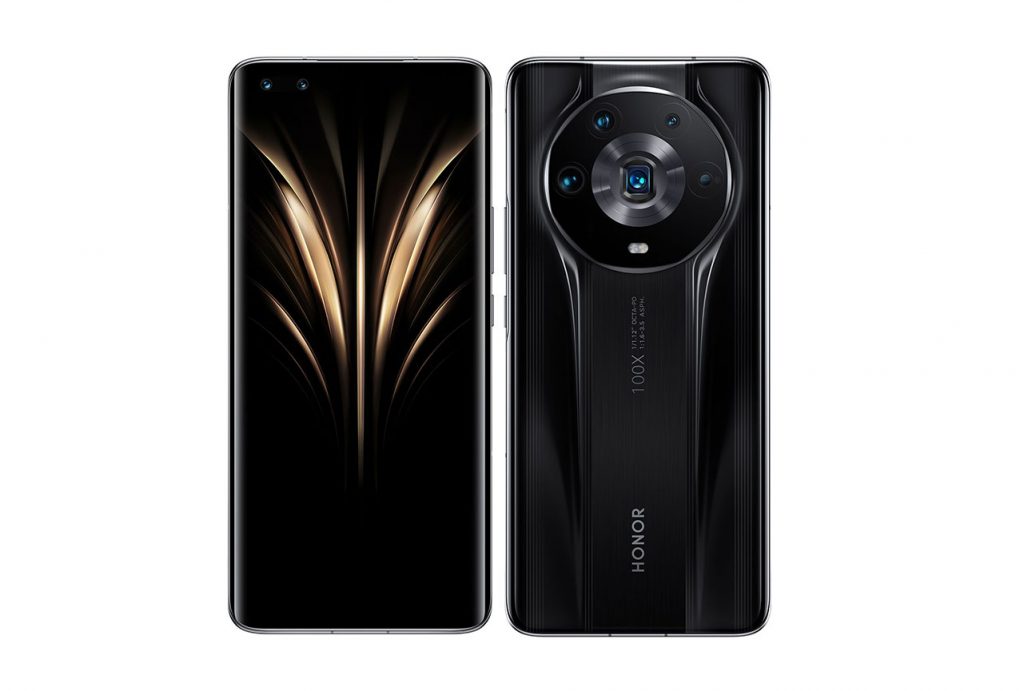

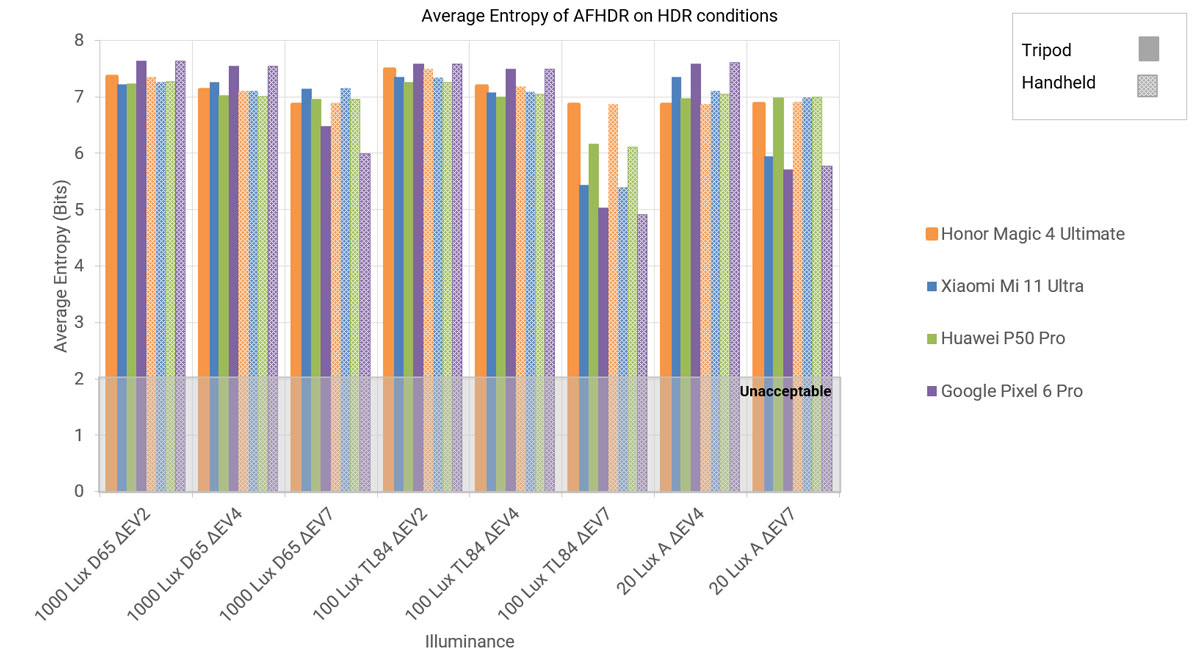
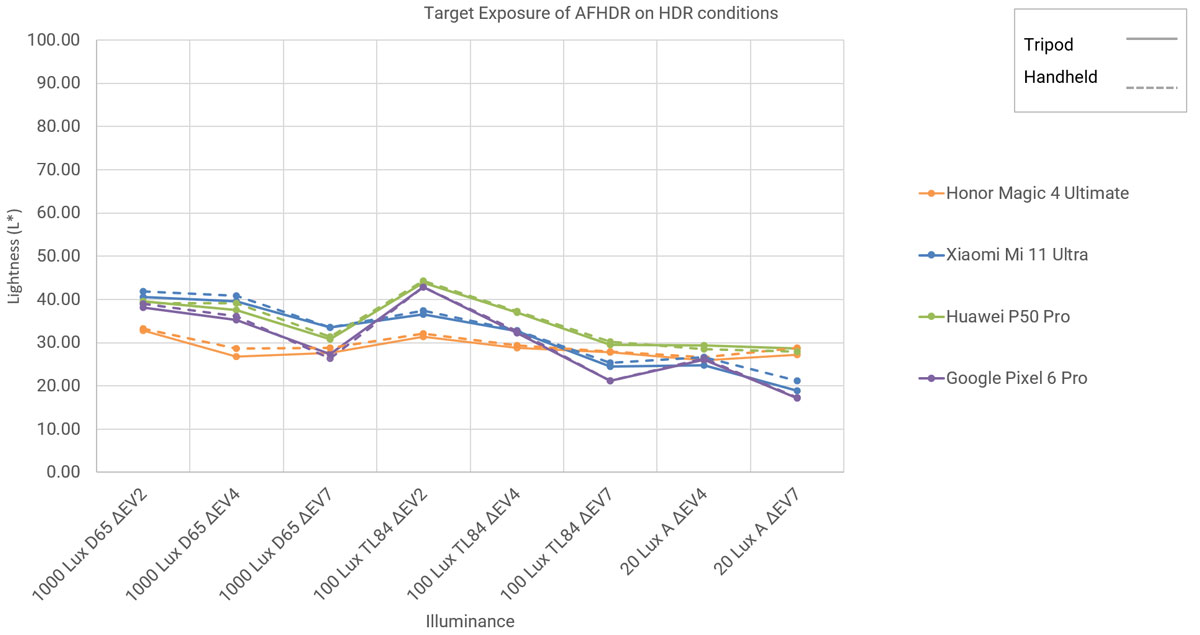
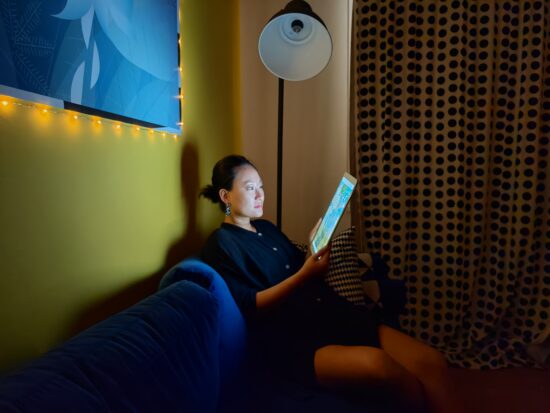
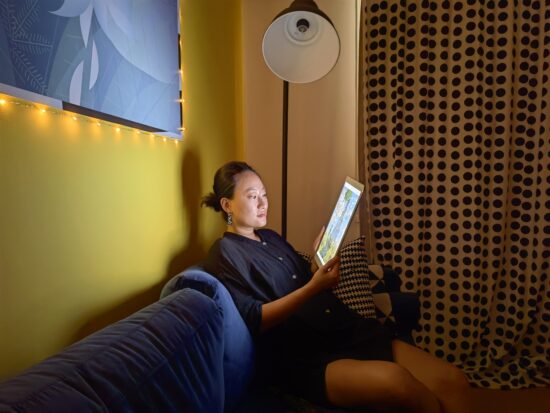
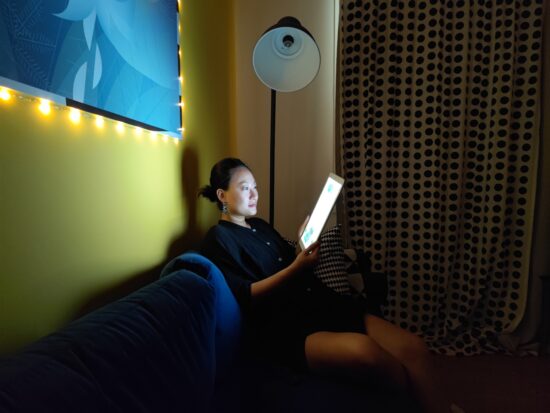






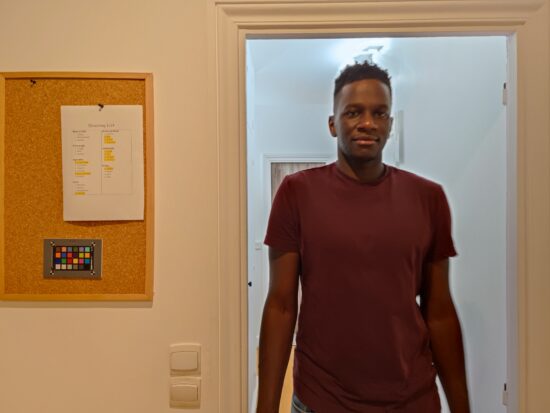








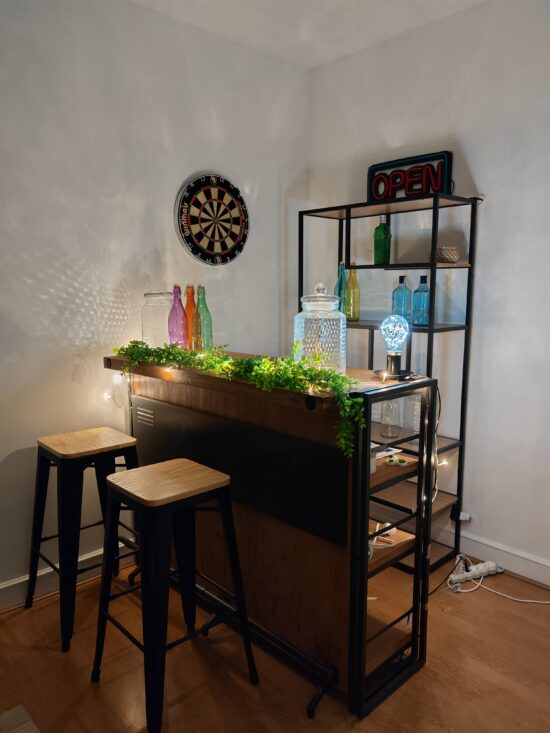

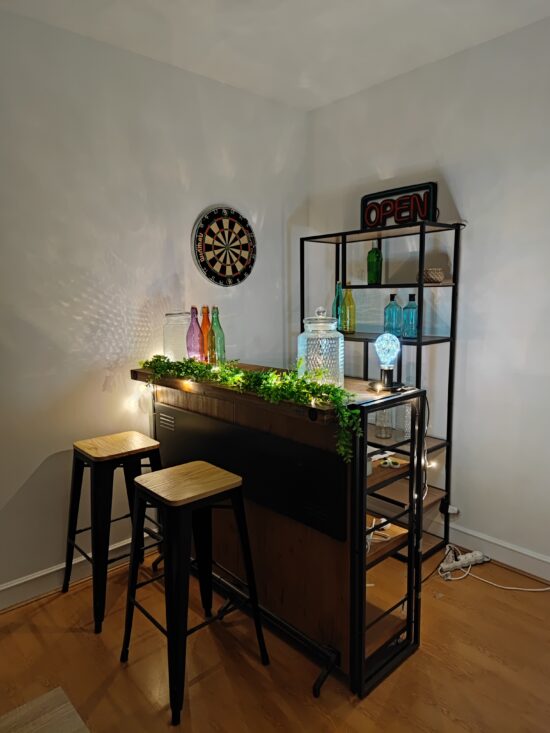







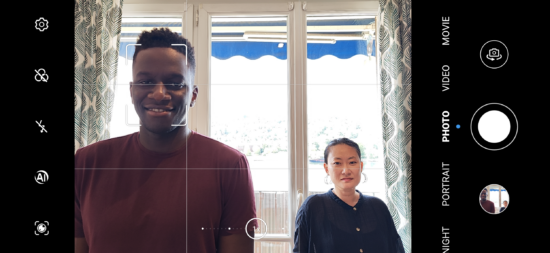













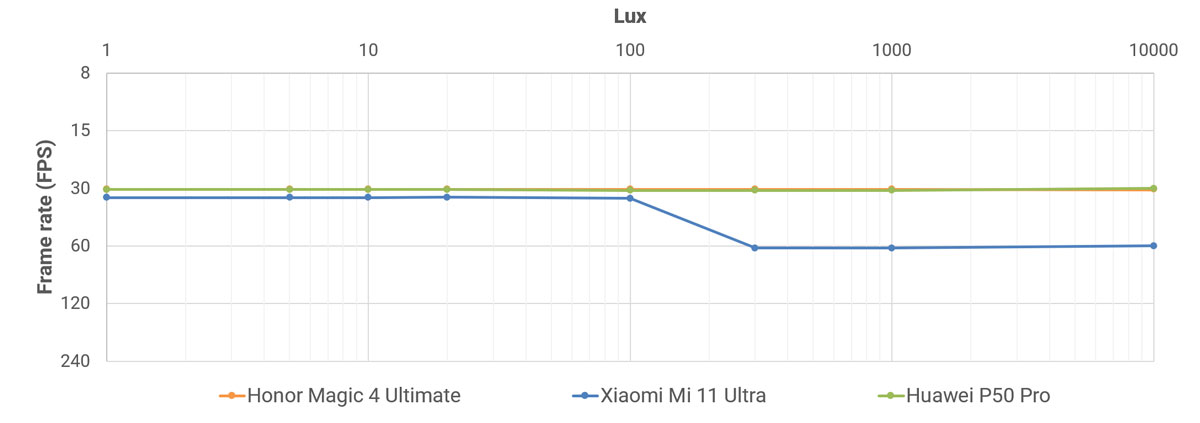
DXOMARK encourages its readers to share comments on the articles. To read or post comments, Disqus cookies are required. Change your Cookies Preferences and read more about our Comment Policy.